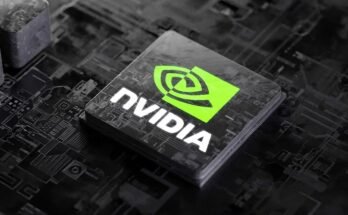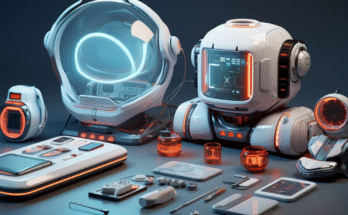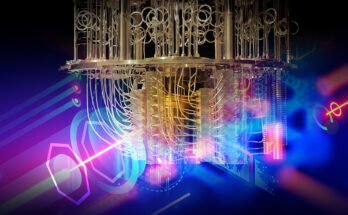AI Boom 2025: How artificial intelligence is changing the world
It has been quite a dramatic acceleration since the year 2025 toward the evolution and integration of artificial intelligence (AI) into almost all the walks of human life. A breakthrough in machine learning and natural language processing eventually initiated an explosion that is bringing a complete industrial, technological, and societal transformation. The “AI Boom 2025” is also a seismic shift most likely referred to as a phase but it is the dawn of a new age.
Whether it is automation of various commercial dealings or diagnostics in healthcare, or even personalization of education, entertainment, and the very possibilities of the future of work, AI is transforming the ways how people live, work, and think. This paper will examine the magnitude and the importance of the AI Boom of 2025, the forces behind it, its applications to all aspects and the challenges ahead.
The origins of the AI Boom
The AI boom of today did not come out of nowhere. It is the cumulative effect of decades of work, compounded growth of computing power, widespread data proliferation, and recent AI advances in the generative field.
Key Catalysts:
Generative AI: Such tools, such as ChatGPT, Claude, and Gemini, have changed the art of natural language engagement, creative writing, and code support.
Foundation Models: Tens-of-terabyte to petabyte- scale language models are now the basis of application development, supporting new industry-specific applications like legal research or customer support.
Custom AI Chips: Enterprises such as NVidia, AMD, and Apple made custom AI processors to enable their models to be run more quickly and efficiently.
Cloud AI Services: Microsoft Azure, AWS and Google Cloud are democratizing access to AI infrastructure and startups and enterprises can build with low friction.
Billions of dollars have streamed into the AI startups in such fields as autonomous agents, healthcare AI, robotics, and video generation.
In the beginning of 2025, AI stopped being a tool, it had become a central technology embedded in the world digital infrastructure.
With Gen AI: New to necessary
The ChatGPT and other generative AI models conquered the world in 2022 and 2023. In 2025 they have grown to be practical productivity tools exercised by hundreds of millions each day.
Year 2025 Use Cases:
Writing & Editing: Journalists, marketers and authors create with the help of AI co-pilots editing, writing and improving material items.
Code Generation: Advances in codes mean that one can write faster using AI-enabled debuggers and AI-enabled logic creation platforms such as GitHub Copilot and Replit AI.
Image or Video Generation: Generation tools are changing the game of visual creation like Midjourney, Runway ML, and Sora AI that are shaking up the industry of advertisement, movie making, and social networks.
Customer Service Automation: The tools have been able to automate more than 70 percent of tier-1 customer requests in industries, such as retail, banking, and telecommunications through the use of AI agents.
The actual innovation? Multi-modal AI, or text, image, audio, and video generative models are expanding the generative capabilities of digital interactions to the farthest reach.
AI in the Workforce, Autonomous Agents
Also in 2025 is the year of autonomous artificial intelligence agents or software characters that can carry out complex tasks across systems and be independent of a human being. Such agents are similar to digital workers with workflows, decision making, and actions taking place in real-time.
Examples:
AI Research Assistants: Agents which can read research papers, digest the wisdom thereof and even propose new experiments in R&D.
E-commerce Bots: The work of AI is to take care of the stock, answer customer questions, update the inventory and handle returns without any outside interference.
Financial AI Advisors:Solutions that track market trends, redefine portfolios, and provide the personalized investment suggestions.
Already, such AI agents are proving to be irreplaceable in startups and fortune 500 companies as well, enhancing productivity and decreasing the cost of operation.
Artificial intelligence in Healthcare: Diagnosing the World of Future
Healthcare is one of the sectors that will be changed by the AI Boom 2025 the most. Artificial intelligence is currently driving the creation of tools that can increase diagnostics, patient outcomes and individualize treatments.
Notable Innovations:
AI Radiology Assistants: Can help the diagnosis of abnormalities in X-rays, MRIs and CT scans possibly better than conventional radiologists.
Predictive Health Models: Artificial Intelligence (AI) that predicts disease outcome (cancer, heart failure). It uses genetic, behavioral, and biometric data to predict such disease risks.
AI- Powered Drug Discovery: This is because this AI technology simulates the interaction of molecules, resulting in highly efficient new drug development, given that the costs and time required diminish considerably.
Virtual Health Coaches: AI powered coaches that assist patients with chronic disease management, nutrition, mental and fitness.
The convergence of AI, wearables, medical imaging, and big data is dawning a new era of preventative, personalized and proactive care.
Artificial Intelligence in Learning: iClass
Thanks to AI driven personalization the education in 2025 undergoes a renaissance. The process of education does not only take place in classrooms or standardised materials anymore.
Artificial Intelligence in the present-day Classrooms:
Adaptive Learning: Adaptive learning systems provide different lessons in real-time, depending on students, responding to their individual performance.
Automated Grading & Feedback: This saves teachers hours as they can insist AI reviews essays, quizzes and even coding work.
Language Learning: AI-powered tools (available in the form of speech and text) allow the user to experience analyzing a conversation with native speakers and enhancing fluency and confidence.
Positioning in Career Paths: The platforms facilitate the ability of students in finding career opportunities across skills, interests, and trends on a global level.
AI can open up education to a wider range of people because it helps to make it more accessible, more inclusive, more scalable, particularly in underrepresented areas where there can be an insufficiency of teachers as well as the presence of obsolete technology.
Business & Enterprise AI: Changing the Principles of Work
The businesses are adopting AI in a way which has not been done before. By 2025, AI is no longer a department, it has pervaded all processes.
Applications: Comm
Sales & Marketing: AI will process the information about the customers in order to provide them with synchronized marketing campaigns and behavior predictability.
Human Resources: Artificial Intelligence has surprising rates of accuracy and empathy when dealing with recruitment, onboarding, and connecting with other employees.
Finance & Auditing: Transactions are reviewed by automation, fraud is detected and real time management of compliance takes place.
Supply Chain Optimization: AI forecasts demands and locates bottlenecks and automates logistics choices.
Artificial intelligence is also transforming leadership approaches and employment practices through changing how organizations make decisions by shifting them out of reactive models and into predictive and prescriptive analytics.
AI Investments: Investment Gold Rush
The AI Boom 2025 is not only technological, but it is a financial revolution. Record amounts of capital are flowing into AI startups, IPOs and infrastructure by investors.
Key Highlights:
The best AI Startups: Synthetic media, autonomous agents, and AI hardware companies get billion-dollar valuations.
Chipmakers Prosper: NVIDIA, AMD and ARM are enjoying colossal stock rallies as a result of the insatiable appetite of AI compute.
PE floodgates: Private equity groups are buying SaaS-based AI companies in order to exploit the recurring revenues model.
Sovereign AI Funds: Nations such as the UAE and China and Saudi Arabia have established national funds in AI that will help to drive innovation in their respective countries.
AI is no longer viewed as a technological gamble-but as the foundation of the entire world digital economy.
Global AI Race Who Leads in 2025?
Such innovations in AI make the technology a geopolitical asset, and the worldwide race is heating up. Although the U.S. and China are still leading the other actors are emerging out of it.
Current Landscape:
United States: Residence of OpenAI, Anthropic, Google DeepMind, and hundreds of startups; funded by huge amounts of money privately and state-sponsored.
China: State-led infrastructure supported by companies such as Baidu, Huawei and SenseTime working on local innovation.
Europe: The first in ethical AI, models that conform to GDPR and AI governance systems.
Middle East & Asia: Countries such as the UAE, India and Singapore are becoming AI innovation leaders with aggressive spending with agile regulations.
The AI Boom does not only transform economies, but also becomes one of the axes of international powers and soft powers.
Hurdles and Caveats: The Pain of AIs Acceleration
In spite of the prospect, AI Boom in 2025 also suggests critical issues, which should be addressed by the society.
Critical Issues:
Decline of Jobs: The automation of tasks not only puts at risk millions of jobs, including data entry jobs and customer services but also knowledge-based occupations.
Bias & Fairness: AI still has gender,racial and cultural bias introduced by poor training data.
Misinformation and Deepfakes: Generative AI is being used to generate fake news, politics and steal identities.
Regulatory Gaps: Governments can not keep up with the pace of innovation and so the laws are often half-baked or ineffective.
AI Consciousness Argument: The more human-like the models become, the more intensively the ethical issues of machine rights and sentience rise.
Greater transparency and accountable rulership, literacy in AI technologies, and transnational regulation is more urgent than ever before.
Next – What Happens Beyond the Boom?
Trying to navigate the current AI Boom 2025, it is obvious that we have just started the transformation. In the future, the breakthroughs in AI are probably to involve:
Artificial General Intelligence (AGI): AI holy grail-Trying to create general purpose models that will reason like the human brain, learn like the human brain and adapt to suit circumstances that are similar to how the human brain responds.
Brain-Computer Interfaces: AI in combination with neural interface that can be used to enter texts in real-time by thinking them or control of digital environments.
Synthetic Life: Synthetic life coupled with robotics to develop autonomous agents in the physical world-factory robots and home helpers.
AI-based Government: Algorithms to become involved in policy making, city planning and forecasting of ecology.
AI cannot substitute the human but it will change the perceptions of what it means to be a human being. The task moving forward is the ethical, inclusive, and sustainable nature of this re-shaping.
Conclusion: The rise of an AI-First World
This is the technology of days past before the AI Boom of 2025 which marks a kind of tech renaissance. Like electricity, the internet and smartphones, AI is now the next universal technology capable of making everything run.
The wave appears whether you are a business leader, student, developer, policy-maker or just a regular user. Not whether you will be affected, but how easily you are ready to live in an AI-first world.
The future is not only approaching–it is creating itself live.




